Born
in Malvern on 22 January 1900, James Frederick Wilson (Fred) Ballantyne was the
eldest of four children of George Frederick Ballantyne (1871-1922) and his wife, the former Annie Wilson
(1873-1927). With his father and grandfather both involved in the building industry, Fred later recalled that "from my earliest
years, it was settled that I should be an architect". To that
effect, he commenced the Diploma of Architecture course at
the University of Melbourne in 1918. At that time, it
was
still necessary
to become articled to a practising architect and, through his
friend Edward Billson (1892-1986), who had become the first local employee in
the Melbourne office of Walter & Marion Griffin,
Ballantyne became the Griffins' first articled pupil - much, as he
later put it, to the "amazement and derision" of his university
classmates.
On completing his articles in 1921, Ballantyne remained on staff in the Griffins' office. Aside from the projects on which he was involved there, he undertook some private commissions (a practice that Griffin encouraged in his office, on a profit-sharing basis) including a Knitlock concrete house at Frankston, later published in the Australian Home Beautiful. During this time, Fred's younger brother, Andrew Keith Ballantyne (1904-1992) also worked briefly as a draftsman for the Griffins, but did not go on to become an architect. In 1922, the family suffered a double tragedy when George succumbed to cancer and his eleven-year-old daughter died after a chimney fell on her during an earth tremor. As a diversion, Fred and his brothers rook their mother on a six-month tour of the United States. Whilst in Chicago, Ballantyne visited some of Frank Lloyd Wright's houses and, via letters of introduction from the Griffins, met Walter's elderly father and Marion's architect cousin, Dwight Heald Perkins. He also recalled meeting one of Griffin's own heroes, eminent architect Louis Sullivan, "then an old man, but still working at the drafting table".
Back in Melbourne by late 1923, Ballantyne took up residence in a house in East St Kilda that his friend Billson had designed a few years before. When he applied for registration as an architect, another ex-Griffin colleague, Henry Pynor, acted as referee. For the next few years, Ballantyne resumed his father's construction business, erecting houses in the twin capacity of designer and builder. These included a new residence at Malvern for his mother, who lived there only briefly before her own early death in 1927. The following year, Ballantyne married Eugenie Owen Davies (1900-1990), and the couple spent almost a year in Europe. His new wife was a history graduate and, as he recalled, "between history of architecture and her type of history, we had a very interesting time".
Returning in early 1929, Ballantyne "decided to give up on building and concentrate on being an architect". While this change of direction was hampered by the Depression, Ballantyne received a substantial commission for a homestead in the Goulburn Valley, which, he recalls, "occupied me for nearly a year". In mid-1933, Ballantyne finally became registered as an architect in Victoria and then entered into partnership with his cousin, Roy Wilson (1906-fl.1976), who had been articled to F L Klingender. Their practice, styled as Ballantyne & Wilson, focused on residential projects; in 1939, they achieved some acclaim when they won joint first prize in a competition for a housing estate at Port Melbourne. By now, Ballantyne had abandoned the Prairie School idiom that had so strongly influenced his earlier work, embracing instead a range of fashionable historicist styles. The office of Ballantyne & Wilson closed down with the onset of the Second World War, when Wilson enlisted with the AIF. In 1942, Ballantyne became attached to the American Army as a civilian engineer, working under architect Osborn McCutcheon.
After the war, Roy Wilson moved to Adelaide and joined the long-running practice then known as Woods, Bagot, Layborne-Smith & Irwin. Promptly promoted to partner in 1946, he held that post until his retirement thirty years later. Back in Melbourme, cousin Fred Ballantyne re-established sole practice under his own name. In contrast to his pre-war career, he focused less on residential projects and more on commercial ones. As well as fitouts for such leading retailers as Prouds the Jeweller and James McEwen & Company, Ballantyne also served as regular architect to the Edments jewellery chain, designing many of its city and suburban outposts. Perhaps his most prominent commercial project during this period was the Port Phillip Arcade in Flinders Street (1960), described at the time as the first stand-alone shopping arcade built in central Melbourne since Edwardian times. Ballantyne's post-war practice also embraced industrial and school projects; he designed buildings at Ivanhoe Boys' Grammar School and did the masterplanning for the new campus of Tintern Girls' Grammar School in Ringwood East.
Based for many years in a terrace house in Lansdowne Street, East Melbourne, the practice was re-badged in the early 1960s as J F W Ballantyne & Partners. The titular partners included a much younger architect, Peter Downie (1928-2016), whose role within the practice grew to the point that, in 1973, it was renamed Ballantyne & Downie. Ballantyne himself retired in 1977 and, until his death a decade later, was regularly pursued by historians and others seeking his recollections of the Griffins. This connection was celebrated in 1980, when his own pre-war work was discussed in a chapter on Griffin in Donald Leslie Johnson's book Australian Architecture 1901-1951: Sources of Modernism. One of the last surviving members of the Griffin office, Ballantyne died on 27 May 1988, just before a major retrospective exhibition of his former employer's work opened at Monash University.
On completing his articles in 1921, Ballantyne remained on staff in the Griffins' office. Aside from the projects on which he was involved there, he undertook some private commissions (a practice that Griffin encouraged in his office, on a profit-sharing basis) including a Knitlock concrete house at Frankston, later published in the Australian Home Beautiful. During this time, Fred's younger brother, Andrew Keith Ballantyne (1904-1992) also worked briefly as a draftsman for the Griffins, but did not go on to become an architect. In 1922, the family suffered a double tragedy when George succumbed to cancer and his eleven-year-old daughter died after a chimney fell on her during an earth tremor. As a diversion, Fred and his brothers rook their mother on a six-month tour of the United States. Whilst in Chicago, Ballantyne visited some of Frank Lloyd Wright's houses and, via letters of introduction from the Griffins, met Walter's elderly father and Marion's architect cousin, Dwight Heald Perkins. He also recalled meeting one of Griffin's own heroes, eminent architect Louis Sullivan, "then an old man, but still working at the drafting table".
Back in Melbourne by late 1923, Ballantyne took up residence in a house in East St Kilda that his friend Billson had designed a few years before. When he applied for registration as an architect, another ex-Griffin colleague, Henry Pynor, acted as referee. For the next few years, Ballantyne resumed his father's construction business, erecting houses in the twin capacity of designer and builder. These included a new residence at Malvern for his mother, who lived there only briefly before her own early death in 1927. The following year, Ballantyne married Eugenie Owen Davies (1900-1990), and the couple spent almost a year in Europe. His new wife was a history graduate and, as he recalled, "between history of architecture and her type of history, we had a very interesting time".
Returning in early 1929, Ballantyne "decided to give up on building and concentrate on being an architect". While this change of direction was hampered by the Depression, Ballantyne received a substantial commission for a homestead in the Goulburn Valley, which, he recalls, "occupied me for nearly a year". In mid-1933, Ballantyne finally became registered as an architect in Victoria and then entered into partnership with his cousin, Roy Wilson (1906-fl.1976), who had been articled to F L Klingender. Their practice, styled as Ballantyne & Wilson, focused on residential projects; in 1939, they achieved some acclaim when they won joint first prize in a competition for a housing estate at Port Melbourne. By now, Ballantyne had abandoned the Prairie School idiom that had so strongly influenced his earlier work, embracing instead a range of fashionable historicist styles. The office of Ballantyne & Wilson closed down with the onset of the Second World War, when Wilson enlisted with the AIF. In 1942, Ballantyne became attached to the American Army as a civilian engineer, working under architect Osborn McCutcheon.
After the war, Roy Wilson moved to Adelaide and joined the long-running practice then known as Woods, Bagot, Layborne-Smith & Irwin. Promptly promoted to partner in 1946, he held that post until his retirement thirty years later. Back in Melbourme, cousin Fred Ballantyne re-established sole practice under his own name. In contrast to his pre-war career, he focused less on residential projects and more on commercial ones. As well as fitouts for such leading retailers as Prouds the Jeweller and James McEwen & Company, Ballantyne also served as regular architect to the Edments jewellery chain, designing many of its city and suburban outposts. Perhaps his most prominent commercial project during this period was the Port Phillip Arcade in Flinders Street (1960), described at the time as the first stand-alone shopping arcade built in central Melbourne since Edwardian times. Ballantyne's post-war practice also embraced industrial and school projects; he designed buildings at Ivanhoe Boys' Grammar School and did the masterplanning for the new campus of Tintern Girls' Grammar School in Ringwood East.
Based for many years in a terrace house in Lansdowne Street, East Melbourne, the practice was re-badged in the early 1960s as J F W Ballantyne & Partners. The titular partners included a much younger architect, Peter Downie (1928-2016), whose role within the practice grew to the point that, in 1973, it was renamed Ballantyne & Downie. Ballantyne himself retired in 1977 and, until his death a decade later, was regularly pursued by historians and others seeking his recollections of the Griffins. This connection was celebrated in 1980, when his own pre-war work was discussed in a chapter on Griffin in Donald Leslie Johnson's book Australian Architecture 1901-1951: Sources of Modernism. One of the last surviving members of the Griffin office, Ballantyne died on 27 May 1988, just before a major retrospective exhibition of his former employer's work opened at Monash University.
Select List of Projects
J F W Ballantyne
| 1921 1922 1924 1925 1926 1927 1929 1933 1934 | Residence, Sherbrooke Residence for A Onians (Stokesay), 289 Nepean Highway, Frankston Residence, Moorehouse Street, Malvern Residence for Mrs G Ballantyne, 9 Haverbrack Avenue, Malvern Residence, Albany Road, Toorak Residence, 116 Caroline Street, South Yarra Residence, Lumeah Road, Caulfield North Residence, St Georges Road, Toorak Residence for Dr C Stephens (Halcyon), Fernshaw Road, Healesville Residence for J F W Ballantyne, 10 Wilks Avenue, Malvern Residence, Henderson Avenue, Malvern Residence, Henderson Avenue, Malvern Residence, Maleela Avenue, Balwyn Residence, Hornibrook, Hopetoun Avenue, Toorak Residence, Russell Street, Toorak Residence, Myrnong Crescent, Toorak |
Ballantyne & Wilson
| 1935 1936 1937 1938 1939 1940 1941 1942 | Residence, Fernhill Road, Sandringham Residence, Montalto Avenue, Toorak Brick shop and timber dwelling, Berwick Residence, St James Court, Toorak Residence, Howitt Road, Caulfield Residence for J F W Ballantyne (Plumstead), 85-87 Terrara Road, Vermont Residence for J Arnold (Champlain), Terrara Road, Vermont Scheme for "Housing for Low-Wage Earners", Port Melbourne [competition entry] Retail outlet for Bookcraft, 66 Toorak Road, South Yarra Vicarage for St Luke's Anglican Church, Mitcham Road, Vermont Residence, Kingston Street, Malvern Residence, Point Nepean Road, Carrum Residence, Springvale Road, Glen Waverley Residence, Lower Heidelberg Road, Heidelberg Factory for Coolart Estate Pty Ltd, 73 Islington Street, Collingwood Residence, Were Street, Brighton East |
J F W Ballantyne (& Partners)
| 1954 1955 1956 1957 1959 1960 1963 1965 1967 1970 | Residence, Mount Eliza Residence, Salisbury Street, Balwyn Retail premises for James McEwen & Company, 210 Lonsdale Street, Dandenong Shopfront for Edments Pty Ltd, Bourke Street, Melbourne Shopfront for Edments Pty Ltd, Nicholson Street, Footscray Residence, 3612 Point Nepean Road, Portsea Classroom block, Ivanhoe Boys' Grammar School, Ivanhoe Port Phillip Arcade, Flinders Street, Melbourne Camp buildings for National Fitness Council, Mount Evelyn Residence, Balwyn Residence, Hopetoun Road, Toorak Shopping arcade, Little Collins Street, Melbourne St Michael's Church of England Grammar School, St Kilda Residence for D Wilson, Fawkner Street, South Yarra |
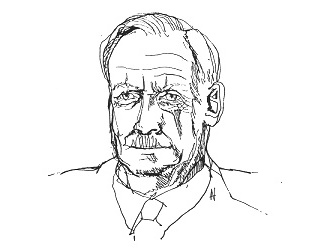 | |
| J F W "Fred" Ballantyne, aged in his late 60s (credit: sketch by Niels Hutchinson) |
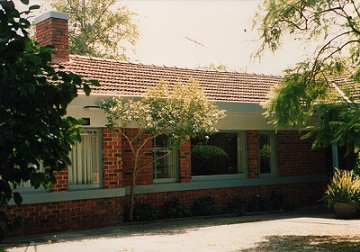 | |
| Residence for architect's mother, Malvern (1924) (Credit: photograph by Simon Reeves, circa 1995) |
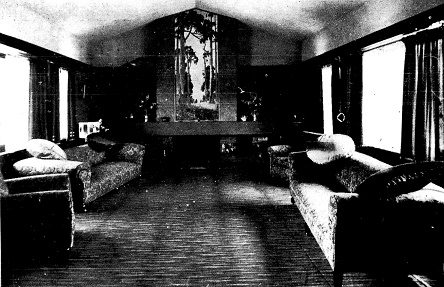 | |
| Residence for architect's mother, Malvern (1924) |
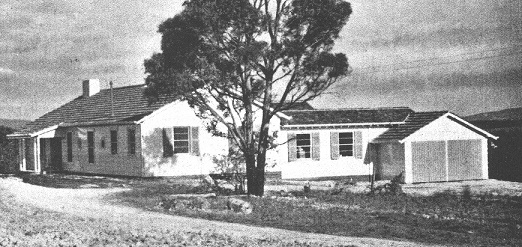 | |
| Architect's own residence, Vermont (1939) |
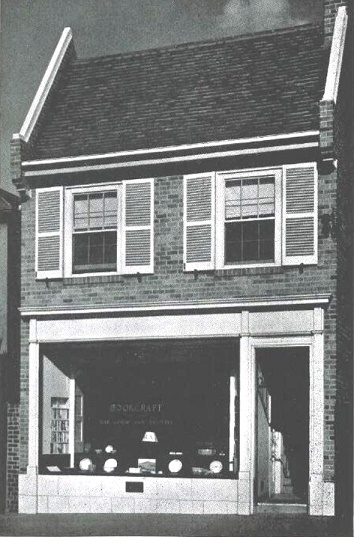 | |
| Retail outlet for Bookcraft, South Yarra (1940) |
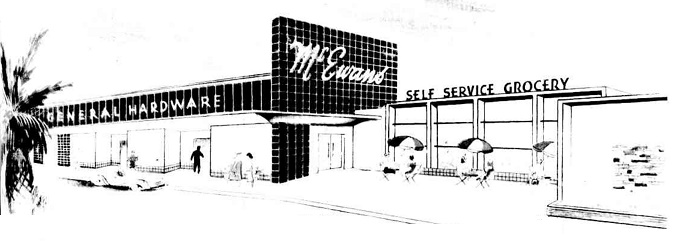 | |
| Showroom for James McEwen, Dandenong (1955) |
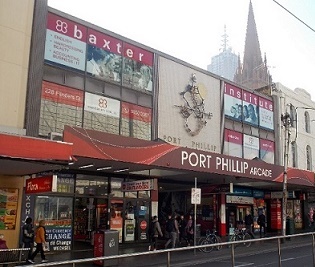 | |
| Port Phillip Arcade, Flinders Street, Melbourne (1960) (Credit: photograph by Built Heritage Pty Ltd) |
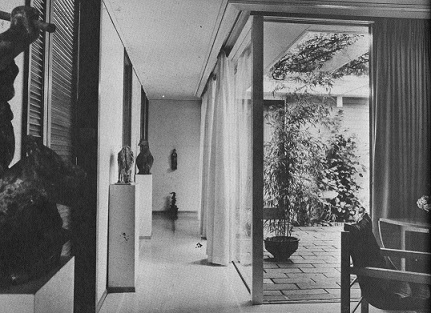 | |
| Residence, Fawkner Street, South Yarra (1970) |
